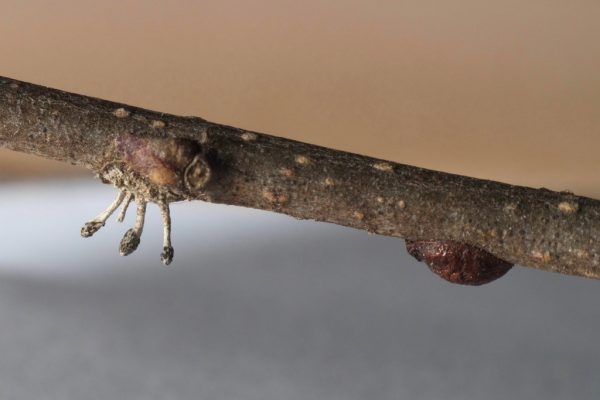Have you ever noticed weird bumps on a plant? They might actually be scale insects!
These strange insects spend most of their lives in one spot, attached to one or two-year-old twigs. They begin their life cycles as “crawlers,” but quickly settle down and overwinter as nymphs. In some species, the adult females then lose their legs, while the males gain wings. Eggs are laid underneath the female’s shell or sometimes in a cottony wax cocoon.
There are two types of scale insects: soft and hard. Hard scales have a wax shell that is not attached to their bodies and feed on the contents of individual plant cells. Soft scales, on the other hand, are covered in a pliable wax and feed on sap. They secrete honeydew, which you may find as a sticky substance on leaves which attracts insects, and sooty mold.
These insects even have their own fungal parasite: Ophiocordyceps clavulata. Of the same genus that creates “zombie ants,“ O. clavulata grows from the bodies and shells of adult insects and can be seen in the Arb. This parasite has not been heavily researched and sources disagree on if it is a symbiont or if it kills the insects with disease as a pathogen.
If you want to observe scales for yourself, there is a large species of soft scale you can find on magnolia trees outside Leighton and Sayles. Look for the large, brown adult stage on outer twigs.












